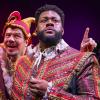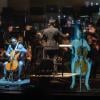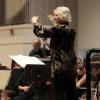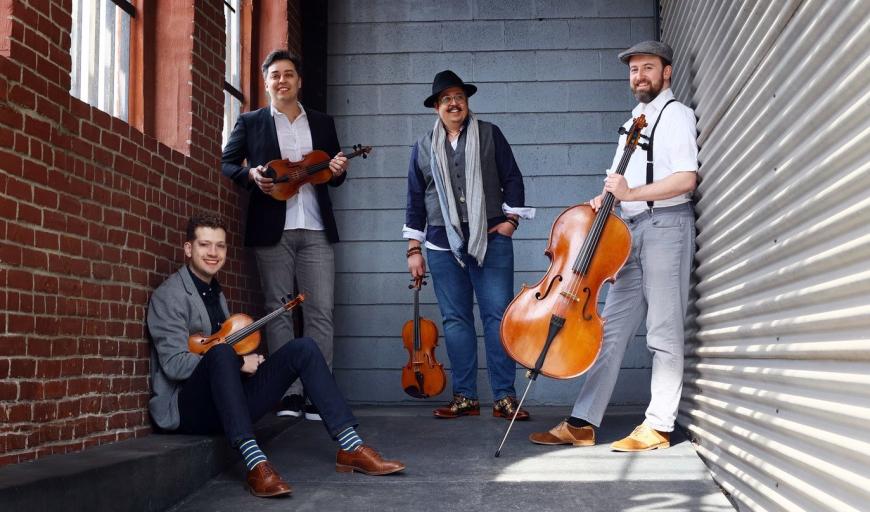
The San Jose Chamber Music Society delights in bringing young and exciting ensembles to the ears of a local audience. Its latest discovery, the Beo String Quartet from Pittsburgh, played a mixed program on Saturday, Feb. 10.
SJCMS’s venue is St. Francis Episcopal Church in Willow Glen, and the bright and carrying acoustic of the space struck sympathetic ears in Beo and was particularly ideal for Enthusiasm Strategies, Missy Mazzoli’s contribution to the Kronos Quartet’s “50 for the Future” project. This brief piece is largely an exercise in swirling harmonics, high and ghostly notes achieved by touching the finger lightly to the string. From chirps and warbles, they coalesce here into shifting chords with unexpected harmonies. Strong chords with regular fingerings come out and grab the listener on occasion.
Beo’s performance of Haydn’s Quartet in G Major, Op. 33, No. 5, sounded almost as if it could have been the same composer two and a half centuries earlier. The sound was bright, shiny, crisp, and chatty throughout. In interpretation, this was the light, cheerful, witty, and ingratiating Haydn whose Opus 33 quartets so impressed Mozart. Rushing into themes and then taking exaggerated pauses at unexpected moments, contrasting lyrical phrases with more angular principal melodies, casually bouncing the rhythm, landing firmly on surprising conclusions — in all these ways, Beo embodied that side of Haydn which is so much fun to listen to.
It was with quite a different mood and tone that the Beo players approached two more serious works by J.S. Bach and Dmitri Shostakovich. A suite of five of the Contrapunctus movements from Bach’s The Art of Fugue was slow and deliberate, with the exception of one fast movement. Andrew Giordano, playing first violin, kept up the light tone color from the Haydn but emphasized lyric flow, while Jason Neukom on second violin sounded lower and more resonant. Violist Sean Neukom and cellist Ryan Ash were darker and more somber still. The arrangements, most of which opened with the fugal theme in the second violin, were well crafted to provide a clear separation of voices, making the fugal structure fully audible.
Shostakovich’s Quartet No. 8, Op. 110, is about as dark and gloomy as a string quartet gets. Because Shostakovich creates that mood so affectingly, this is his best-known work in the genre. In remarks beforehand, Ash attributed the gloom to the composer having recently toured the ruins of Dresden after the city’s World War II firebombing. There are other suggestions as to what might have influenced Shostakovich’s cast of mind.
The Beo players took the outer Largo movements particularly slowly, with a tenderly lyrical cast to the long-spun melodies, especially Ash’s high-lying cello part in the finale. They contrasted this with a fierce and dry declamation in the Allegro molto and a viciously cutting approach to the exchanges between violins in the Allegretto. But the “knocks at the door” by the secret police depicted in the fourth movement came out strangely consonant, rhythmically incisive but not terrifying. Overall, this was a rendition to keep listeners’ attention rapt.
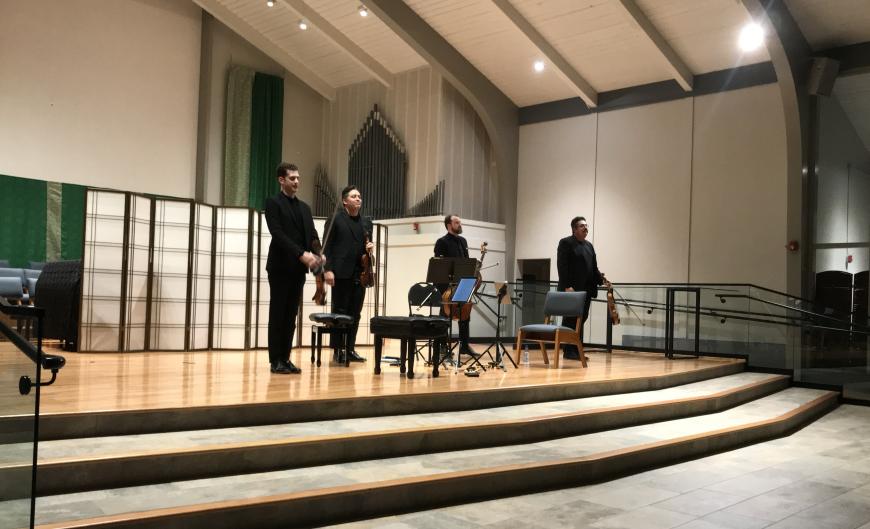
That left two shorter items on the program, both of Mexican provenance and employing additional sound-makers. Gabriela Ortiz’s “Mictlán,” a movement from her suite Altar de Muertos, depicts the Aztec underworld and is dominated by rhythmic foot-stomping, the players equipped with wooden rattles on their ankles. On the church’s resonant floorboards, the Beo players pounded aggressively. A melodic line picks its way through the rhythm and emerges in quieter interstitial passages. Like all of Ortiz’s work, this was memorably colorful and attractive in a dangerous way.
Sean Neukom, Beo’s violist, writes a considerable amount of material for the Quartet and here contributed El Balcón, based on his late mother’s memory of her girlhood in Mexico City. Hearing a noise outside, she looked out from her balcony but fell over the railing, only to feel an angelic spirit lift her up to safety. Neukom depicts this in music that runs from dry strumming to pizzicato plucking to ecstatic churning with the bows, to which the players add vocal parts that evolve from humming to whistling to singing an account of the event in Spanish and English. Full-bodied singers they are not, but on their stringed instruments, the Beo players were remarkable and arrestingly attention-grabbing throughout this piece and the whole concert.


